Indians & Cultural Encounters
Towns
Tennessee Indian towns were situated in easily defended locations. They also had lots of fertile ground for growing crops, and plenty of space to hold rituals. Towns were the center of day to day existence. They consisted of several households.
In addition, each village had a ceremonial plaza and ball grounds, a ceremonial rotunda, and a council house for religious worship and government activities. Until the early 18th century, many towns appear to have had walls made from logs. Some larger towns even had forts.
Cherokee and Chickasaw towns were similar. They were mostly made up of scattered farmsteads and small settlements located in more remote areas. In the early period of exploration, a typical town was spread out over a big area.
After European contact, Indians began putting buildings within a town closer together for better defense. As towns developed and Indians began to rely more on agriculture, they also became more sedentary . Though they still hunted and trapped, the Indians no longer relied just on hunting and gathering for sustenance. Instead they planted crops and raised animals.
For information about the Cherokee town of Chota, click here.
For information about the Cherokee town of Toqua, click here.
Picture Credits:
- Painting of a Cherokee farmstead in the mid 1700s as portrayed by contemporary artist Carlyle Urello. This painting is based upon research from the University of Tennessee conducted in the Lower Little Tennessee River Valley. Southeastern Native American Documents, Frank H. McClung Museum, University of Tennessee.
- Drawing of the Native American Village of Pomeiooc by John Whyte. The drawing shows several buildings in the village, which is surrounded by a circular fence. Many villagers are also shown gathered around a fire. This picture was originally included in the book A Briefe and True Report of the New Found Land of Virginia by Thomas Hariot. Later the image was engraved by Theodor de Bry and reprinted in 1590. De Bry wanted to make Native Americans look more like Europeans, so he drew them with blonde hair and white skin. Although the drawing is not entirely accurate, it demonstrates how some Europeans did not understand or appreciate the ways in which Native Americans were different from them. The group pictured belong to the Southern Algonquian group of Indians and are related to the Shawnee. North Carolina Collection, University of North Carolina.
- Print depicting the Indian Village of Secoton. The scene shows village huts and fields as well as a lake or river. A ceremony is also visible in the lower left corner. Originally drawn by John Whyte, this picture was included in the book A Briefe and True Report of the New Found Land of Virginia by Thomas Hariot. Later the image was engraved by Theodor de Bry and reprinted in 1590. The group pictured belongs to the Southern Algonquian group of Indians and are related to the Shawnee. Trustees of the British Museum.
- A monument to the ancient Cherokee town of Chota in Monroe County. The monument is built directly over the townhouse site for the village. Most of the former village is submerged under Tellico Lake which was created when the Tellico Dam was built in 1979. During archeological excavations in 1969, the grave of Cherokee leader Oconostota was discovered. He was reburied next to the monument. The monument contains eight pillars, one for each of the seven clans and one for the nation as a whole. Wikimedia Commons
- A monument to the Cherokee village Tanasi which is considered the origin of the name of the state of Tennessee. The monument is located in Monroe County on the shoreline of Tellico Lake next to the location of the now submerged town. Monroe County Chamber of Commerce online at www.discovermonroe.com
Indians & Cultural Encounters >> Indian Life >> How They Lived >> Towns
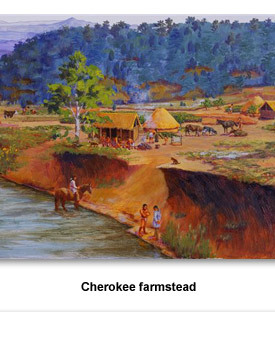
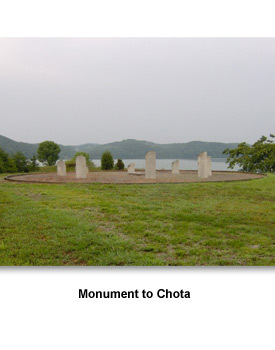
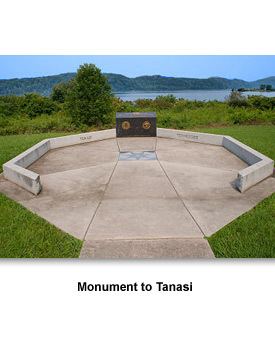
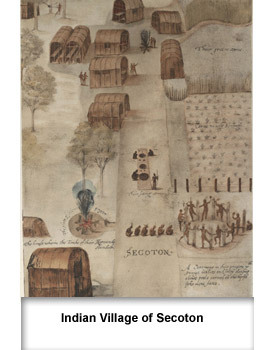
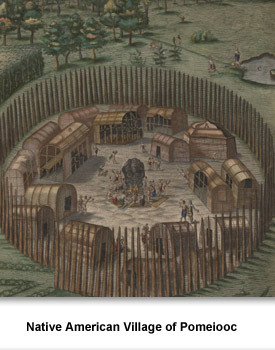
 Sponsored by: National Endowment for the Humanities
Sponsored by: National Endowment for the Humanities